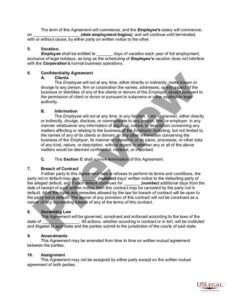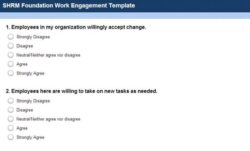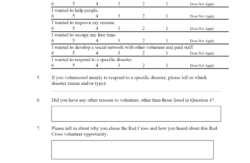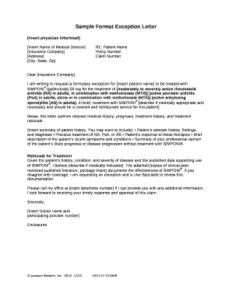Serving on a nonprofit board is a commitment to a cause, driven by passion and a desire to make a difference. While enthusiasm is crucial, a clear understanding of roles, responsibilities, and expectations is equally vital for the board’s effectiveness and the organization’s success. Without proper guidelines, even the most well-intentioned board members can face confusion or misunderstandings that hinder progress.
This is where a formal agreement comes into play. It acts as a foundational document that outlines the framework for board service, ensuring everyone is on the same page from day one. Creating a clear agreement helps protect both the individual board member and the organization they serve, fostering an environment of transparency and mutual accountability.
Why a Formal Agreement is Essential for Your Nonprofit Board
Implementing a formal agreement for your nonprofit board members isn’t just about formality; it’s a strategic move to strengthen your organization’s governance and operational efficiency. It provides clarity, sets expectations, and helps mitigate potential issues before they arise, ultimately contributing to a more cohesive and productive board.
First and foremost, a well-drafted agreement establishes a clear understanding of the fiduciary duties and legal responsibilities each board member undertakes. Board members are legally obligated to act in the best interest of the organization, exercising due care and loyalty. An agreement articulates these duties explicitly, reminding members of their critical role in safeguarding the organization’s assets and reputation. This clarity helps prevent accidental breaches of duty and ensures compliance with relevant regulations.
Defining Roles and Responsibilities
One of the primary benefits of a formal agreement is its ability to precisely define the roles and responsibilities of each board member. This goes beyond the general understanding of ‘being on the board’ and drills down into specific expectations. Without this, some members might feel over burdened, while others might not fully understand their required contributions, leading to imbalances and inefficiencies. A clear outline ensures everyone knows their part in the collective effort.
It is important to outline specific areas where board members are expected to contribute. These often include:
- Participating actively in governance and strategic planning.
- Providing financial oversight and ensuring fiscal responsibility.
- Engaging in fundraising efforts or contributing personal donations.
- Representing the organization positively to external stakeholders.
- Attending a minimum number of board meetings and committee meetings.
Mitigating Risks and Ensuring Accountability
A formal agreement acts as a crucial tool for risk management. It establishes clear protocols for addressing conflicts of interest, outlines confidentiality expectations regarding sensitive organizational information, and specifies a code of conduct. By having these elements documented, the board can proactively address ethical dilemmas and maintain public trust. Moreover, it creates a framework for accountability, making it easier to address underperformance or breaches of the agreement constructively.
Ultimately, a detailed agreement fosters a professional and respectful environment where all board members can contribute their best. It reduces ambiguity, encourages proactive participation, and supports the overall health and sustainability of the nonprofit organization, allowing it to focus more effectively on its mission.
Key Components to Include in Your Nonprofit Board Agreement
When developing a nonprofit board of directors contract template, it’s crucial to think comprehensively about all aspects of board service. This document isn’t just a formality; it’s a living guide that shapes how your board operates and interacts with the organization. Including the right elements ensures that both the board member and the nonprofit have a clear understanding of their mutual commitment.
One of the foundational elements is the term of service. Clearly stating the length of a board member’s term, whether it’s one, two, or three years, and outlining the process for re-election or term limits, prevents confusion and ensures a natural rotation of leadership. Alongside this, attendance expectations for board and committee meetings should be specified, highlighting the importance of active participation for effective governance.
Confidentiality clauses are another vital component. Board members often have access to sensitive information, including donor lists, financial details, and strategic plans. An agreement should explicitly state the expectation that all such information remains confidential, both during and after their term of service, to protect the organization’s integrity and data.
Furthermore, a comprehensive nonprofit board of directors contract template should address financial expectations. This can include a requirement for board members to make an annual financial contribution, participate in fundraising activities, or leverage their networks to support the organization’s development efforts. Clearly outlining these expectations upfront helps ensure that board members understand their role in the financial sustainability of the nonprofit.
It is also beneficial to include a conflict of interest policy. This section should define what constitutes a conflict, require board members to disclose potential conflicts, and outline the process for recusal from discussions or votes where a conflict exists. This transparency is essential for maintaining ethical standards and public trust. Finally, consider adding a statement on the organization’s mission and values, reinforcing that all board actions should align with these core principles, and an outline of the process for removal should a board member consistently fail to meet their obligations.
A well-crafted agreement serves as an invaluable tool for any nonprofit, providing a solid foundation for effective governance and mission advancement. By clearly articulating expectations, responsibilities, and ethical guidelines, it empowers board members to fully commit to their roles, fostering an environment of trust, transparency, and collective purpose. Embracing such a template can significantly strengthen your organization’s leadership and its capacity to achieve its goals, ensuring a vibrant future for the cause you champion.



